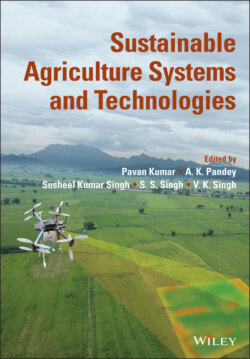Читать книгу Sustainable Agriculture Systems and Technologies - Группа авторов - Страница 24
1.5 Policy Implication
ОглавлениеThe situation of having sufficient amount of calories for the Indian population and yet evidences of significant lack in children and women shows the gap between demand and supply. The scattered distribution of prevalence of malnutrition across the states indicates that there is a need to classify the regions as per the gravity of the situation. There was more percentage of affected children in rural area as compared to urban area, suggesting that the focus needs to be more toward the rural beneficiaries. The surrounding environmental conditions in rural area are less clean and hygienic than those of urban area, hence the implementation of Swachh Bharat and village sanitation should be done more efficiently than that at present state. The situation of other socioeconomic indicators shows that there is need of a holistic approach toward improving the nutrition as well as education, awareness, and hygiene of the vulnerable states. The vulnerable sections need to be identified and then ways to tackle them need to be devised at localized scale rather than with a single policy at national level. There is a need to develop smooth transit of quality agricultural produce to different regions as the supply is the issue and not the availability. The focus needs to be more on raising the standard of living of vulnerable sections rather than increasing the growth rate of the state, as it does not indicate equitable distribution of income. Agriculture can help in improving the situation provided the focus shifts from production centric to profit‐centric agriculture. Make sure that the implementation is done properly through better monitoring and strict evaluation.
